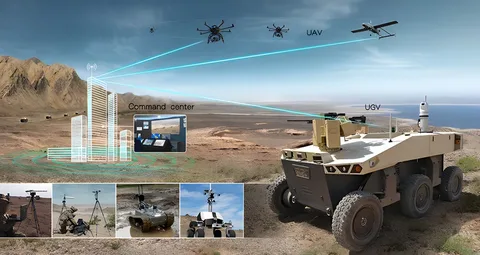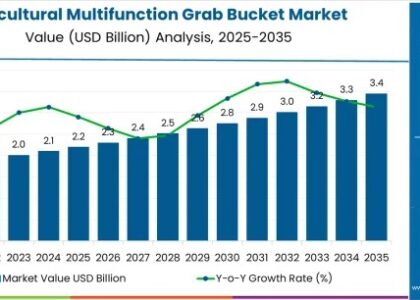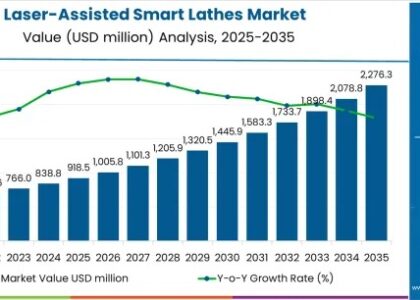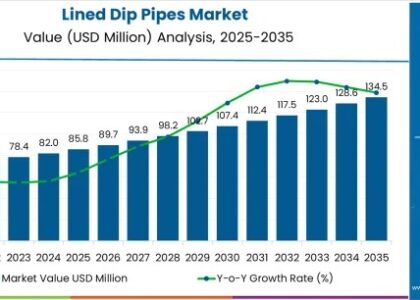The global unmanned systems market is projected to grow from USD 28.02 billion in 2025 to USD 76.05 billion by 2035, reflecting a CAGR of 10.5% during the forecast period. The increasing demand for autonomous and semi-autonomous platforms in defense, surveillance, logistics, and industrial sectors drives this growth.
From skies patrolled by drones to oceans navigated by autonomous submarines and roads traveled by driverless vehicles, unmanned systems are no longer a futuristic concept—they are an integral part of the present-day innovation landscape. As industries seek smarter, safer, and more efficient ways to operate, unmanned systems are becoming vital tools across defense, logistics, agriculture, infrastructure, and emergency services.
Spanning air, land, sea, and even space, unmanned systems are reshaping how missions are carried out, how data is gathered, and how environments are explored—heralding a new era of operational autonomy.
Get Ahead with Our Report: Request Your Sample Now!
https://www.futuremarketinsights.com/reports/sample/rep-gb-22355
Beyond Remote Control: The Rise of Autonomous Capabilities
Early unmanned systems were largely dependent on human operators and remote controls. Today, advances in AI, machine learning, and sensor fusion have ushered in a new generation of semi-autonomous and fully autonomous platforms capable of navigating complex environments, making split-second decisions, and executing missions with minimal human intervention.
These systems are no longer just tools—they are intelligent agents performing surveillance, reconnaissance, mapping, delivery, inspection, and even combat operations. Their ability to process data in real-time and adapt to changing conditions makes them invaluable across a growing range of applications.
Airborne Pioneers: Unmanned Aerial Systems (UAS)
Perhaps the most visible segment of the unmanned systems market, unmanned aerial systems—commonly known as drones—are revolutionizing aerial operations. In military scenarios, they provide tactical intelligence and precision strike capabilities. In civilian sectors, drones are used for agriculture monitoring, infrastructure inspection, filmmaking, and emergency response.
With developments in vertical takeoff and landing (VTOL) technology, payload capacity, and endurance, UAS platforms are pushing the boundaries of what’s possible in both rural and urban environments. Emerging drone corridors, unmanned traffic management systems, and evolving regulations are paving the way for expanded commercial use.

Unseen, Underwater: Unmanned Maritime Systems
Beneath the surface, unmanned underwater vehicles (UUVs) and unmanned surface vehicles (USVs) are exploring oceans, inspecting pipelines, conducting naval reconnaissance, and mapping seabeds. These systems reduce the need for human divers and manned missions in hazardous or inaccessible environments.
Equipped with sonar, GPS, and advanced autonomy, maritime unmanned systems are critical for naval defense, environmental monitoring, and offshore oil and gas operations—where real-time data collection and operational safety are paramount.
Grounded and Guided: Unmanned Ground Vehicles (UGVs)
On land, unmanned ground vehicles are gaining ground across both military and industrial landscapes. These robotic platforms are used for cargo transport, surveillance, bomb disposal, and perimeter security. In agricultural applications, UGVs perform autonomous seeding, fertilizing, and harvesting with high precision and efficiency.
As AI and navigation technologies advance, UGVs are being equipped to handle more complex, unstructured terrains—paving the way for use in mining, firefighting, and disaster recovery efforts.
Converging Technologies, Expanding Use Cases
Unmanned systems are evolving in parallel with key enabling technologies—such as 5G connectivity, edge computing, advanced sensors, and satellite-based navigation. This convergence is unlocking new capabilities and integration opportunities across domains.
Interoperability between systems is also improving, allowing unmanned assets to work in coordinated swarms or in tandem with manned systems. From autonomous drone fleets to hybrid air-land operations, multi-domain collaboration is becoming a strategic advantage in both civilian and defense applications.
Thorough Market Evaluation: Full Report
https://www.futuremarketinsights.com/reports/unmanned-systems-market
Challenges in Autonomy, Safety, and Regulation
Despite rapid adoption, unmanned systems face several challenges. Ensuring the reliability, cybersecurity, and ethical use of autonomous platforms remains a priority. For fully autonomous operations, systems must be capable of handling unpredictable conditions while ensuring fail-safe mechanisms and compliance with air, maritime, and ground safety standards.
Regulatory frameworks are still evolving, with different countries and regions implementing their own rules for airspace access, data privacy, and mission authorization. Harmonizing these standards is essential to unlocking the full potential of unmanned mobility.
Commanding the Future of Operations
Unmanned systems are no longer auxiliary tools—they are becoming core operational assets across sectors. As industries demand safer, faster, and more data-driven solutions, these systems offer unmatched agility, efficiency, and scalability.
From enhancing national defense to revolutionizing commercial logistics and environmental research, unmanned systems are leading the charge toward a more autonomous and interconnected future. Silent in operation but loud in impact, they are redefining the boundaries of human capability—and forging new pathways for exploration, protection, and progress.






